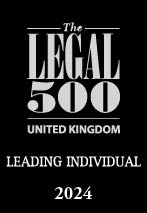Trade marks or brands are designed to be used by businesses to differentiate their goods from those supplied by other businesses. In essence, it is a stamp to say “I made this”. However, trade marks can also communicate a great deal of information about a product including, quality, price and ingenuity. Therefore, in a climate of rapidly developing technology, branding has become one of the most important assets of a business and one which must be protected.
Registered versus unregistered marks Trade mark registration is a voluntary (and costly) process and, therefore, many brands rely on unregistered business marks and protection offered by the common law action of “passing off”. However, given the greater protection offered by registration, many business seek registration of their trade marks in the UK / EU and beyond. This is because a trade mark which is registered can be a valuable commercial asset, exploitable, easier to protect and enforce (against potential infringers), and is renewable (at a cost) for an indefinite period. But how does a business ensure that its trade marks are capable of registration?
Getty Images v Office for Harmonisation in the Internal Market (“OHIM”) The recent “photos.com” judgement which was re-affirmed by the European Court of Justice (ECJ) this year is important. In 2009, Getty Images sought to trade mark the domain name "photos.com" through which it sells photographic images for decoration and interior design. Since then photos.com has been battling to have it entered on the European Union community trade mark register. It is important to note that domain names of a company’s name are perfectly capable of being registered as trade marks (for instance, “amazon.com” or “amazon.co.uk” are both well-known registered marks in the UK/EU).
However, the ECJ recently dismissed the appeal against a rejected application to trade mark “photos.com” for Classes 9, 42 and 45 (i.e. classification for computer software, installation, and maintenance and licencing of images) by Getty Images. The rationale behind the long contested judgement was that “photos.com” was devoid of distinctive character. In essence, the court decided that an average consumer (who would be no more than reasonably attentive) would not perceive the domain name as a sign indicating the commercial origin of the goods or services sought (i.e. Getty Images).
Comment This seems to be the correct decision. The fact that Getty Images was the holder of the domain name which corresponded to the trade mark application does not necessarily confer a right to have it registered under EU law. Trade marks are required (at their core) to be distinctive to a particular business as opposed to being just descriptive of the goods and services sold. Therefore, to give protection to such a common term as “photos.com” would have seemed wrong.
If you would like advice regarding trade marks or about ensuring your brand is protected, contact our Corporate and Commercial team.










